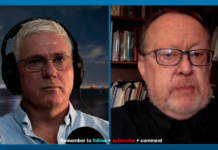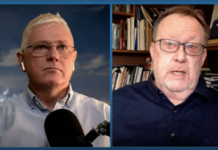Analysis by Keith Rankin.

The above chart traces the vote-share of Germany’s establishment political parties: the right-wing CDU/CSU and the now-centre-right SPD (essentially the Christian Democrats, just like National in New Zealand) and the Social Democrats (just like Labour). And it compares Germany with England to show a similar process there.
An increasingly stale political centre has consolidated power in both Germany and the United Kingdom, despite record low vote-shares for these establishment parties. In Germany, the ‘major party’ combined vote has fallen to 45% (nearly as low as that in last year’s election in France, for the Centre and the traditional Right). In the United Kingdom, the establishment (Labour, Conservative) vote has fallen to 60%; though, given a much lower turnout in the United Kingdom than Germany, 60% there represents a similar level of support to that of the equivalent parties in Germany.
With these outcomes being at-best borderline-democratic (JD Vance had a point about the shutting-out of alternative voices), neither country is scheduled to have another election until 2029. And the ‘left’ establishment parties – in office in both countries in March 2025 – are as right-wing as their centre-right predecessor governments of Merkel and Sunak.
We note that, for Germany, elections before 1991 are for West Germany only. And, for the United Kingdom, my aim has been to focus on England, where Celtic nationalist parties have not played a role; thus until 1979, the British data is for the United Kingdom, whereas from 1983 the data is for England only. We also note that Germany shows few signs of promoting the literally colourful characters who play such an important part in contemporary British politics.
The waxing and waning of the postwar German mainstream
Postwar German politics began in 1949, with its new MMP voting system; proportional voting featuring two disqualification mechanisms, a five percent party-vote threshold, and the failure to gain a local electorate using the simple-plurality (FPP) criterion. (In Germany, in the 1950s, the latter disqualification rule was tightened; three electorate seats were required, rather than one.)
The rise in the two-party vote from 1949 to 1972 represented the consolidation of the major-party system, essentially in line with the post-war German economic miracle. From 1949 to 1969, the government was CDU-led. The SPD led the government from 1969 to 1982 (though with fewer votes than the CDU/CSU). All subsequent governments have been CDU-led, except for the relatively short-lived administrations of Gerhard Schröder (c.2000) and Olaf Scholz.
The fall in establishment-party vote-share reflects the rise of the Green Party in Germany, which itself reflects the waning of the economic miracle.
The 1990s’ political stability reflects the reunification era, the political dominance of Helmut Kohl; and the fact that, due to reunification, German politics suspended its characteristic debt-phobia.
The 2000s and 2010s represents the Angela Merkel era. The 2009 result reflects the Global Financial Crisis. The 2005 vote reflects the early Eurozone period, in which investment within the European Union was diverted into the development of the southern EU countries (and to Ireland). In particular, the 2000s saw the rise of The Left Party, which was shunned by the Establishment parties; this was the beginning of the German ‘firewall’, which meant that ‘grand coalitions’ were favoured over the inclusion of ‘outsider’ parties into government. In that time, the Green Party became a centrist party; inside rather than outside ‘the tent’.
In 2014 the debt-phobic way Germany ‘resolved’ the Euro crisis was popular in Germany, though ‘austerity’ ushered in the deflationary bias that has characterised subsequent fiscal policy in the European Union. (The adverse effect of deflationary fiscal policy was the use of a zero-interest-rate monetary policy by the European Central Bank; so the adverse consequences of the austerity policies played out more slowly than they might have.)
Since the initial ‘triumph’ of austerity in 2014, we have seen a substantial and ongoing decline in the vote for the establishment parties. However, these parties managed to consolidate power despite haemorrhaging votes. The new 2025 Government will be a substantially right-wing government made up of German-National (CDU 28.5%) and German-Labour (SPD 16.4%); this represents easily the worst vote ever for the ‘left’ SPD and easily the second-worst vote ever for the ‘winning’ CDU/CSU.
And, in the United Kingdom, the vote for Labour in 2024 was easily the worst vote of any ‘winning’ party in any election since 1945 (and possible since the time of Walpole in the 1720s).
Democracy anyone?
Postscript UK
In the UK, the highest percentage vote for a political party in the postwar era was 48.8% for Clement Attlee’s Labour Party, seeking a third term in office (in a very-early election which Attlee was tricked into calling). Labour was defeated, despite its record-high poll! Winston Churchill’s Conservatives got 48.0% of the vote; but, crucially, more seats. Attlee’s government was the least stale government in the United Kingdom’s post-war history; Attlee, in the UK, had a popularity and significance comparable to that of Michael Joseph Savage in New Zealand.
*******
Keith Rankin (keith at rankin dot nz), trained as an economic historian, is a retired lecturer in Economics and Statistics. He lives in Auckland, New Zealand.








